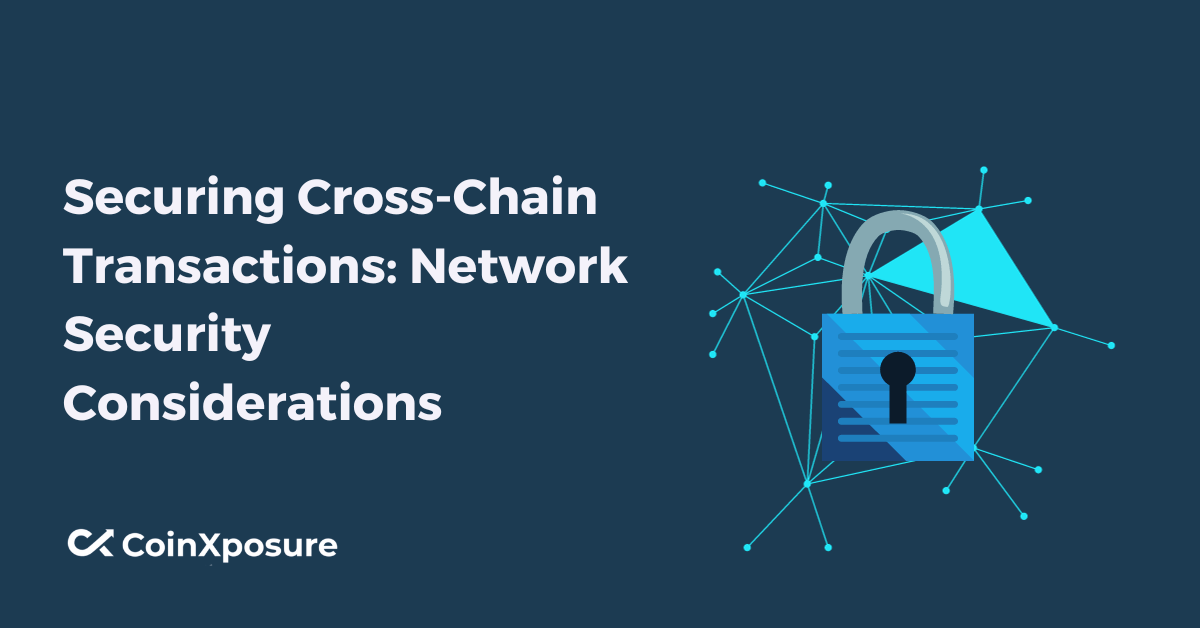In an era dominated by blockchain technology, the proliferation of decentralized ecosystems has given rise to the need for seamless interaction between distinct blockchain networks.
Cross-chain transactions, facilitating the transfer of assets and data across disparate blockchains, have emerged as a pivotal solution.
However, with this innovation comes the imperative to fortify the security infrastructure governing these transactions.
This article explores the critical considerations and challenges associated with securing cross-chain transactions, emphasizing the paramount role of network security in ensuring the integrity and reliability of this evolving landscape.
Key Components of Cross-Chain Transactions
Cross-chain transactions involve intricate processes facilitated by several key components, each playing a crucial role in ensuring the seamless transfer of assets and data between disparate blockchain networks.
- Blockchain Networks Involved:
- Identification and integration of participating blockchain networks.
- Compatibility of consensus mechanisms and protocols.
- Smart Contracts and Interoperability:
- Smart contracts act as the execution engines, ensuring the terms of transactions are met.
- Interoperability protocols enable communication and coordination between smart contracts on different chains.
- Cryptographic Techniques:
- Secure hash functions and digital signatures authenticate transactions.
- Encryption methods safeguard sensitive data during transmission.
These components collectively form the foundation of cross-chain transactions, fostering interoperability and trust in a decentralized environment.
Network Security Considerations
When securing cross-chain transactions, several network security considerations are paramount to ensure the integrity, confidentiality, and reliability of the overall system:
- Interoperability Risks
- Communication Protocols
- Consensus Mechanism Alignment
Interoperability Risks
Identification and mitigation of vulnerabilities in smart contracts deployed across different chains.
Managing consensus algorithm disparities to prevent transaction inconsistencies.
Communication Protocols
Implementation of robust encryption and decryption mechanisms for secure data transmission.
Validation of communication protocols to prevent unauthorized access or data manipulation.
Consensus Mechanism Alignment
Ensuring consistency in consensus mechanisms across involved blockchain networks.
Implementing Byzantine Fault Tolerance to handle discrepancies in decentralized consensus.
These considerations form the foundation of a secure cross-chain transaction environment, addressing challenges associated with interoperability, communication, and consensus alignment.
Best Practices for Cross-Chain Transaction Security
To enhance the security of cross-chain transactions, implementing the following best practices is crucial:
- Multi-Signature Wallets
- Auditing Smart Contracts
- Consistent Security Policies Across Chains
Multi-Signature Wallets
Require multiple private key signatures for transaction authorization, reducing the risk of unauthorized access.
Auditing Smart Contracts
Regularly audit and validate smart contracts for vulnerabilities, ensuring the execution of transactions adheres to predefined rules.
Consistent Security Policies Across Chains
Establish and enforce uniform security policies across all participating blockchain networks to maintain a cohesive and robust security posture.
By incorporating these practices, organizations can bolster the security of cross-chain transactions, minimizing the potential for vulnerabilities and ensuring the integrity of decentralized transactions across diverse blockchain ecosystems.
Future Trends and Innovations of Cross-Chain Transactions
Anticipated future trends and innovations in securing cross-chain transactions include:
- Improved Interoperability Standards
- Evolution of Cross-Chain Protocols
- Enhanced Security Mechanisms
- Decentralized Identity Solutions
Improved Interoperability Standards
Development and adoption of standardized protocols to enhance seamless communication and collaboration between disparate blockchain networks.
Evolution of Cross-Chain Protocols
Ongoing refinement and innovation in cross-chain protocols to address scalability issues, enhance efficiency, and adapt to evolving blockchain landscapes.
Enhanced Security Mechanisms
Integration of advanced cryptographic techniques and security measures to fortify cross-chain transactions against emerging threats and vulnerabilities.
Decentralized Identity Solutions
Implementation of decentralized identity solutions to enhance user authentication and authorization, ensuring secure access to cross-chain transactions.
These trends reflect the dynamic nature of the blockchain space, with a continual focus on improving interoperability, security, and scalability for cross-chain transactions.
Conclusion
Securing cross-chain transactions is imperative as blockchain ecosystems continue to evolve. The intricate nature of these transactions demands a holistic approach to network security.
By addressing interoperability risks, refining communication protocols, and aligning consensus mechanisms, the foundation for secure cross-chain transactions is laid.
Best practices, such as employing multi-signature wallets, conducting regular smart contract audits, and enforcing consistent security policies, serve as crucial safeguards against potential vulnerabilities.
Looking ahead, future trends point towards improved interoperability standards, the evolution of cross-chain protocols, and the integration of advanced security mechanisms.
As the blockchain landscape advances, the proactive adoption of these security measures is paramount.
Ongoing vigilance and adaptability are essential to navigate the complexities of cross-chain transactions, ensuring decentralized interactions’ continued integrity and trustworthiness across diverse blockchain networks.












